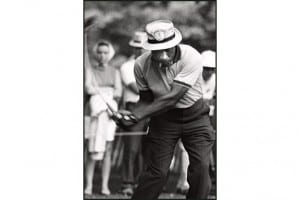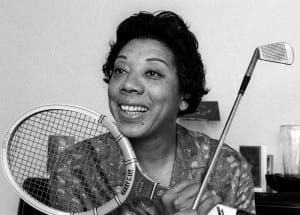African Americans and Golf
Despite considerable barriers presented by racial segregation and inequality a small group of middle class African Americans played the sport in the 1920s. The United Golfers Association (UGA), formed in 1926, helped to promote and provide opportunities for African American golfers through the 1960s. In 1961, the PGA removed its Caucasian-only clause, which had existed in its bylaws since 1943. This change opened up PGA tournaments to African American golfers allowing extremely talented black professional players like Charles Sifford and Lee Elder to compete at the highest level. Slowly but surely and thanks to public pressure, PGA tournaments were desegregated, finishing with the Masters in 1975 when Lee Elder became the first African American to play in the tournament.
The UGA also sponsored events for women. Ann Gregory was among its most celebrated players winning the UGA championship four times and becoming the first black woman to participate in the United States Golf Association championship in 1956. Beginning in 1963, tennis great Althea Gibson played on the LPGA tour.
Lincoln Country Club
Just as municipal courses were being opened to blacks in the North, a small number of private courses were built by African American elites. These black owned and black run courses were mainly in the East and Midwest, however Lincoln Country Club was established in 1932 in Atlanta. Given the persistence of segregation, this course served as a center of activity for African American golf in the Southeast, hosting many tournaments including the Southern Open.
While financial limitations meant the 9-hole course was not always well-maintained, Lincoln was home to several famous African Americans including the sociologist and civil rights activist W.E.B. Du Bois who appeared on the 1934 membership roster. The course was located next to the Lincoln Cemetery, where many notable African Americans are buried, including Tup Holmes and his father, Hamilton M. Holmes who served on the board of directors at Lincoln.
Sources: Andy Ambrose, Atlanta History Journal, 1999; Marvin P. Dawkins & Graham C. Kinloch, African American Golfers During the Jim Crow Era, 2000; USGA.


